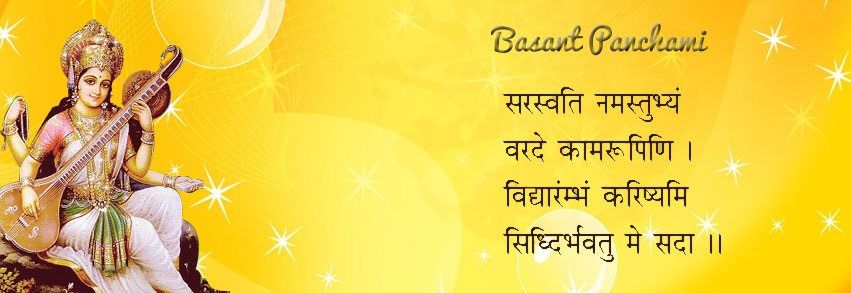
Vasant Panchami, also spelled Basant Panchami, is a Hindu spring festival.It is observed on the fifth day of the Indian traditional calendar month of Magha, which typically falls in the Gregorian months of January or February.
Students in schools and colleges celebrate this day as well and in many places, books and pens are also worshipped.
People dress in yellow and they offer yellow flowers to others and to the gods and goddesses. They also prepare and feast on a special pastry called kesar halwa or kesar halva, which is made from flour, sugar, nuts, and cardamom powder. This dish also includes saffron strands, which gives it a vibrant yellow color and mild fragrance.
During the Vasant Panchami festival, India’s crop fields are filled with the color yellow, as the yellow mustard flowers bloom at this time of the year.
Sri Krishna And Radharani
The celebration of Vasant Panchami can be traced back to Dwapara yuga. According to scriptures like Srimad Bhagwatam and other Vaishnava scriptures, the transcendental Vasant ras lila had taken place on this night on the Govardhan hill. The place, later, came to be known as Chandra sarovar. It is also mentioned in the scriptures that Lord Chandradev stood still for one night of Brahma to look at this divine dance of Sri Krishna and his beloved gopis, headed by Srimati Radharani.
Goddess Saraswati
The celebration of the Vasant Panchami is centered on the Hindu goddess Saraswati. Saraswati is the goddess of wisdom. She embodies the different facets of learning such as the sciences, arts, crafts and skills. She is said to be calm and collected. She is often pictured seated on a lotus or a peacock, wearing a white dress.
The festival is celebrated in various ways depending on the region. Many revere goddess Saraswati, the Hindu deity of learning, arts and music. She is celebrated with visits to her temples, by playing music, as well as the day when parents sit down with their children, initiate them into writing letters of alphabet or study together.
The Goddess Saraswati is the goddess of intellect and learning. She has four hands which symbolize ego, intellect, alertness and the mind. She carries a lotus and scriptures in two of her hands and she plays music on the veena (an instrument similar to a sitar) with her other two hands. She rides on a white swan. Her white dress is a symbol for purity. Her swan signifies that people should have the ability to discern the good from the bad.
God Kamadeva and Rati
Others mark it as the festival of god Kama, the Hindu deity of love,by remembering the loved one particularly one’s spouse or special friend, celebrating it with spring flowers. Its link with the god of love and its traditions have led some scholars to call it “a Hindu form of Valentine’s Day”.Others wear yellow clothes and eat yellow rice to emulate the yellow mustard (sarson) flower fields, or play by flying kites.
It is remembered as the day when Parvati approached Kama to wake up Shiva in Yogic meditation since the Maha Shivaratri. The other gods support Parvati, and seek Kama’s help to bring Shiva back from his meditation to do his duties in the world. Kama agrees and shoots arrows, made of flowers and bees, at Shiva from his heavenly bow of sugarcane in order to arouse him to pay attention to Parvati. This initiative is celebrated by Hindus as Vasant Panchami.
Deo temple: Sun God
The shrine of the Sun-God in Aurangabad district, Bihar known as the Deo-Sun Shrine, was established on Basant Panchami. The day is celebrated to commemorate the founding of the shrine by King Aila of Allahabad and the birthday of the Sun-Deo God. The statues are washed and old red clothes on them are replaced with new ones on Basant Panchami. Devotees sing, dance and play musical instruments.
Sikhism
Namdhari Sikhs have historically celebrated Basant Panchami to mark the beginning of spring. Other Sikhs treat it as a spring festival, and joyfully celebrate it by wearing yellow colored clothes, emulating the bright yellow mustard flowers in the fields.In the Punjab region, Basant is celebrated as a seasonal festival by all faiths and is known as the Basant Festival of Kites. Children buy Dor(Thread) and Guddi or “Patang” (Kites) for the sport.
